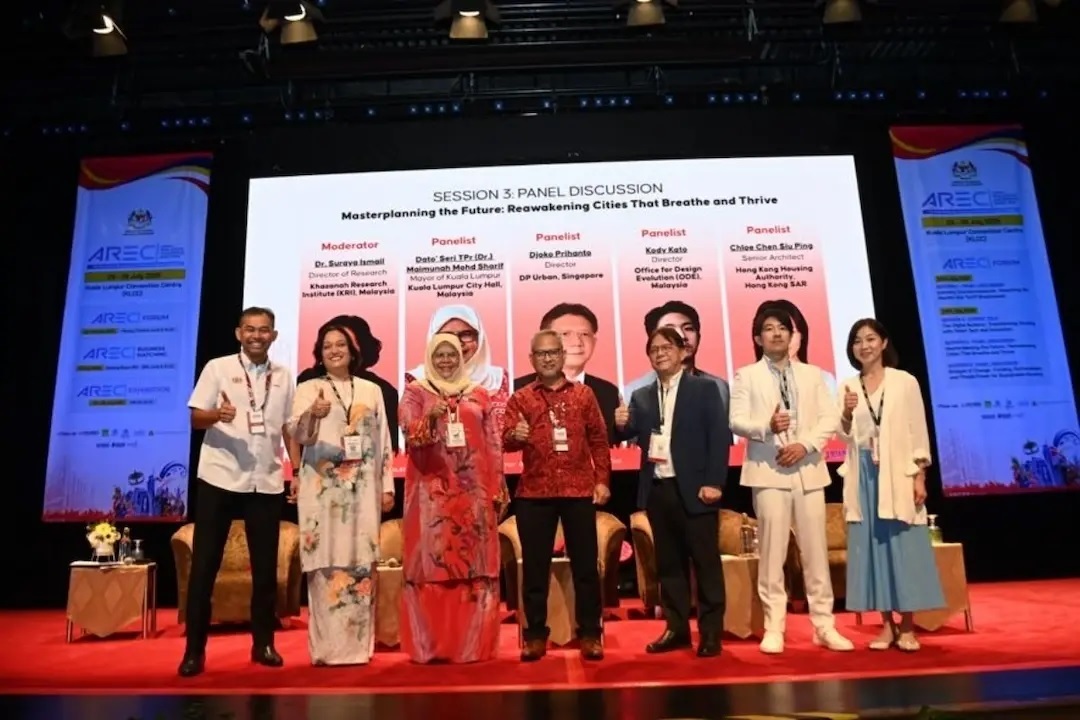
- This was put forth during the Arec: Forum 2025 panel discussion titled "Masterplanning the Future: Reawakening Cities that Breathe and Thrive".
KUALA LUMPUR (July 24): Master planning the future requires a community effort. This was put forth during the Arec: Forum 2025 panel discussion titled "Masterplanning the Future: Reawakening Cities that Breathe and Thrive" at the Kuala Lumpur Convention Centre.
The panellists spoke on ventures into newer philosophies of reshaping cities with sustainability and humanity at the core of the redevelopment agenda.
“We must have the money and policy as well as the people’s engagement to integrate the plans while co-creating spaces with the people,” said Mayor of Kuala Lumpur Datuk Seri Maimunah Mohd Sharif as she shared the recently launched Pelan Tempatan Kuala Lumpur (PTKL) 2040 project by DBKL.
“When we talk about city for all and inclusivity, it translates to action on the ground with various sectors to empower communities together through the 4P principle of public-private-people-partnership.”
She urged the public to shift their views on everyone’s responsibilities when it comes to the transformation in order to implement the plans. She added, “We cannot do it alone, we need you in on this with us.”
When DP Urban Singapore director Djoko Prihanto was asked about the updated planning principles, he mentioned that cities are getting older, and so are the buildings.
“So, the question that remains is what will it look like in the future? The shift of ideas when it comes to development of highways and high-rise buildings [is] being replaced by the need for connected accessibility spaces. This is possible, but it takes time and courage, more importantly from the government, to approach this,” he added.
He also ventured into the implementation of public art as an investment and something to give back to society. “In Singapore, the government took the initiative to give incentives to those who put public art in social spaces. This shifts the city into one with 'flavour' that gives a sense of personality to the country.”
Singapore takes advantage of the lack of land to experiment with an integrated community hub with nine agencies to provide facilities within one location. The project went on as a success to gain enough revenue, which is used to manage the maintenance of the building.
Office for Design Evolution Malaysia director Kody Kato, who spoke on reawakening the city using bio-integrated materials and cultural design structure, noted that materials are in constant response to the changing environment.
His projects come with the 4R's: recapturing excessive heat waste, reusing on-site existing materials, re-finalising the community and cultures, and regenerating spaces and buildings in the city using recycled materials.
The study on low impact materials for the development in the city and partnerships with various manufacturing companies are able to help him understand how the material influences spaces in the city, more specifically the heat temperature which plays a role in designing spaces for the people’s environment.
Hong Kong Housing Authority senior architect Chloe Chen Siu Ping shared her knowledge regarding Hong Kong’s high-density developments in light of the community’s mobility and well-being, especially in public housing and the public space integration when crafting future-ready housing districts.
Similar to the 4P concept, Hong Kong applies the human-centric approach which listens to the opinions of different parties related to the community to collaborate and fulfil the ideas.
During a Q&A session, Chen was asked about how to overcome the vandalism issue found within public housings, she said that it is vital to design the estates to make it feel like it belongs to the community.
“We always comply with the well-being design guide which includes a colourful facade of a rainbow, just like our previous estates. We don’t only build flats, we build a home and community for millions. I'm sure we can all agree that if you are comfortable with your surroundings, you would not do anything to destroy it,” said Chen.
As urban planning takes a new shift towards accessibility and sustainability, the common goal is the emphasis on urging teamwork between the government, developers and the public.
Does Malaysia have what it takes to become a Blue Zone, marked by health and longevity? Download a copy of EdgeProp’s Blueprint for Wellness to check out townships that are paving the path towards that.





